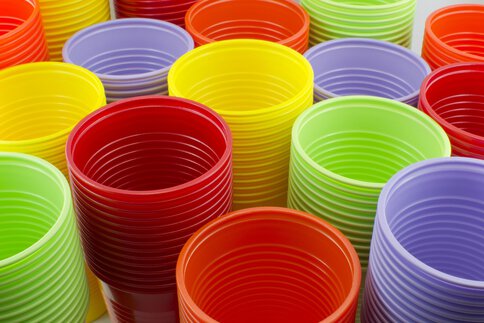Customized plastics: Polymer analysis as a driver
Cheap plastics—as if! Some high tech plastics conduct electricity, others store information or are as resilient as steel. They owe their extraordinary properties to their molecular structure and the addition of additives. Only modern analysis makes the development of such efficient polymer materials possible.
The properties of plastics mainly depend on their internal structure: How are the monomers arranged in the polymer chain? Are the chains arranged as orderly threads or more like a heap of spaghetti? Are there any crosslinks? Do smaller agglomerates deposit to form larger ones? IR and NMR spectroscopy as well as other polymer analysis methods—from X-ray techniques to dipole moment measurement—answer this question as well as many others. This makes them indispensable tools in the development of new plastics. The exact knowledge of the molecular structure is particularly significant, when it comes to high tech polymers which are intended for use as optical data memories, in displays and technical components or as conductive inks in printed electronics.
But it is not only about the polymer as such. Nearly all plastic materials would be useless without any additives. Stabilizers, flame retardants, UV absorbers, plasticizers and many other additives make the polymers fit for their respective applications. Apart from that, they facilitate their processing. Any common plastics contains about ten different additives. Material researchers are permanently developing new additives or testing new mixtures.
But the blend of additives does not always do the trick. Due to interactions between the additives or with the actual polymer, unintended effects, such as discoloration, unpleasant odors or loss of stability may be observed. Polymer analysts use methods of spectroscopy, chromatography, mass spectrometry and high-resolution microscopy to get to the root of the problem. Imaging methods, which also supply molecular information, are particularly helpful. Imaging mass spectrometry, e.g., makes material defects, for example the efflorescence of additives, visible and analyzes their chemical composition at the same time. Thanks to the sophisticated analysis, the defects can be remedied and even more efficient plastics can be developed.
This might be also of interest to you
Controlled end products
No more harmful additives and odors: Analysis is consumer protection.

This might be also of interest to you
The entire value chain
Plastic toys, sneakers or high tech polymers for foldable displays: plastics are everywhere.

Find out about the trends and developments in fields of smart plastics at analytica:
polymer • monomer • plastics • polymer analysis • analysis • additives • IR spectroscopy • NMR spectroscopy • chromatography • imaging mass spectrometry • material development
